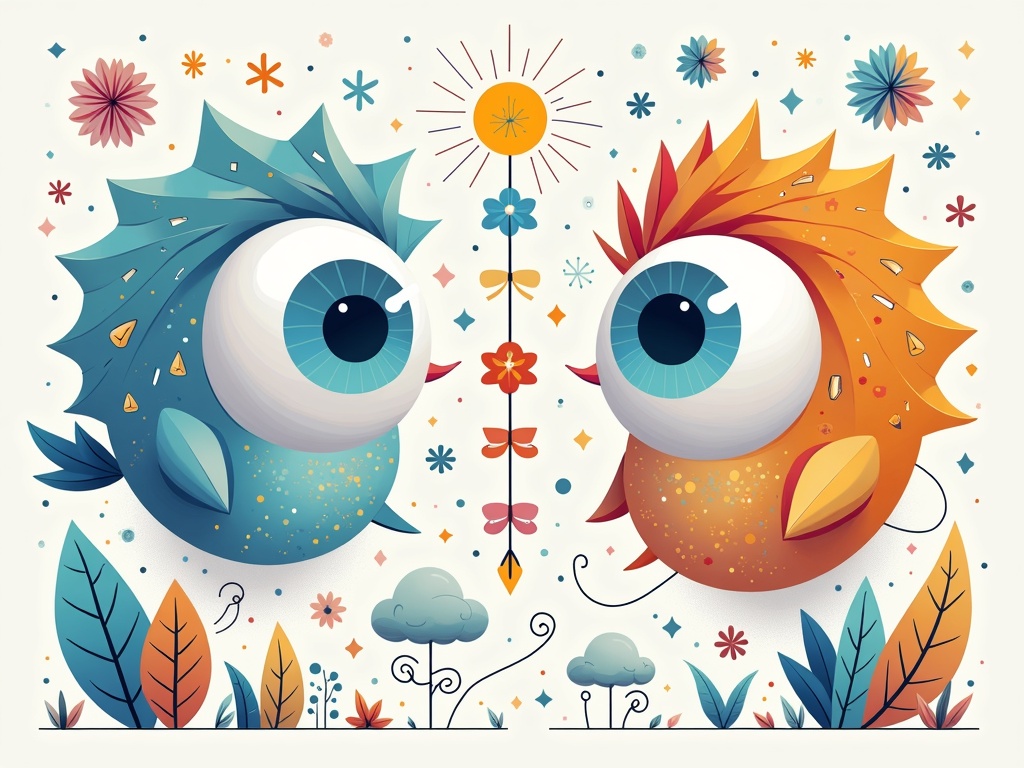Wireframe vs. Mockup vs. Prototype: Demystifying the Design Process
Imagine trying to build a house without blueprints. Chaos, right? In the world of digital product design, wireframes, mockups, and prototypes are those essential blueprints, each serving a unique purpose in bringing your vision to life. But with so many terms floating around, it's easy to get them confused. What exactly *isthe difference between a wireframe, a mockup, and a prototype, and when should you use each one? Let's break it down and get you building better digital products.
Understanding the Core Concepts
Think of wireframes, mockups, and prototypes as stages in a product's visual and functional evolution. They represent increasing levels of fidelity and interactivity. Each step helps you validate assumptions, gather feedback, and refine your design before a single line of code is written for the final product.
What is a Wireframe?
A wireframe is the skeletal framework of your design. It's a low-fidelity, black-and-white (or grayscale) representation of your product's structure and layout. Think of it as a blueprint outlining the arrangement of elements on a page or screen.
**Purpose:To define the information hierarchy, content prioritization, and basic navigation.
**Focus:Structure, functionality, and user flow.
**Fidelity:Low. Wireframes are intentionally simple, using basic shapes, lines, and text placeholders.
**Interactivity:Minimal to none.
**Tools:Pen and paper, whiteboard, Balsamiq, Moqups, Miro.
**Key Elements of a Wireframe:**
**Content blocks:Represented by rectangles or placeholders.
**Headings and text:Indicate the type of information that will be displayed.
**Navigation elements:Buttons, menus, and links.
**Basic UI elements:Form fields, search bars, etc.
Wireframes should be quick and easy to create, allowing for rapid iteration. Don't get bogged down in details at this stage. The goal is to establish a solid foundation.
What is a Mockup?
A mockup is a static, high-fidelity visual representation of your product's design. It's essentially a pretty picture that showcases the visual style, including colors, typography, and imagery.
**Purpose:To present the visual design and aesthetics of the product.
**Focus:Visual appearance, branding, and style.
**Fidelity:High. Mockups closely resemble the final product's visual design.
**Interactivity:None. Mockups are typically static images.
**Tools:Figma, Sketch, Adobe XD, Photoshop.
**Key Elements of a Mockup:**
**Color palettes:Accurate representation of brand colors.
**Typography:Selection and styling of fonts.
**Imagery:Use of relevant photos, illustrations, or icons.
**Visual hierarchy:How elements are arranged to guide the user's eye.
**Overall aesthetic:The look and feel of the product.
Mockups are used to communicate the visual design to stakeholders and to get feedback on the aesthetic aspects of the product. They help to ensure that the design aligns with the brand identity and appeals to the target audience.
What is a Prototype?
A prototype is an interactive simulation of your product. It allows users to interact with the design and experience the functionality, albeit in a limited way. It helps you understand how users will actually use your interface.
**Purpose:To test the usability and functionality of the product.
**Focus:User experience, interaction design, and functionality.
**Fidelity:Can range from low-fidelity (interactive wireframes) to high-fidelity (near-final product).
**Interactivity:High. Prototypes allow users to click through screens, interact with elements, and complete tasks.
**Tools:InVision, Figma, Adobe XD, Proto.io, Marvel.
**Key Elements of a Prototype:**
**Clickable elements:Buttons, links, and interactive components.
**Transitions and animations:Visual cues that indicate how the interface responds to user actions.
**User flows:Simulated paths that users can take through the product.
**Form validation:Basic error handling and feedback for user input.
**Data simulation:Realistic dummy data to simulate the user experience.
Prototypes are invaluable for usability testing. By observing users interacting with the prototype, you can identify potential usability issues and make necessary improvements before development begins. This is where you iron out the kinks in user experience.
Wireframe vs. Mockup vs. Prototype: A Detailed Comparison
Let's dive deeper into the key differences between these three essential design deliverables:
| Feature | Wireframe | Mockup | Prototype |
| ————- | —————————————— | —————————————— | ——————————————— |
| **Purpose | Define structure & functionality | Showcase visual design & aesthetics | Test usability & functionality |
| **Fidelity | Low | High | Low to High |
| **Interactivity| Minimal to None | None | High |
| **Focus | Layout, Information Hierarchy, User Flow | Visual Appearance, Branding, Style | User Experience, Interaction, Functionality |
| **Output | Black & White Sketches, Digital Outlines | High-Resolution Images, Static Designs | Interactive Simulations, Clickable Demos |
| **Cost| Low | Medium | Higher |
| **Time to create| Short | Medium | Longer |
When to Use Each Deliverable
Knowing when to use each of these design tools is crucial for an efficient design process.
**Use Wireframes:**
In the early stages of the project, when you're defining the scope and structure.
To quickly iterate on different layout options.
To communicate the basic functionality and user flow to the development team.
**Use Mockups:**
To present the visual design to stakeholders and get their feedback.
To ensure that the design aligns with the brand identity.
To create a visual target for the development team.
**Use Prototypes:**
To test the usability of the product with target users.
To identify and fix usability issues before development begins.
To demonstrate the functionality of the product to stakeholders.
To gather feedback on the user experience.
The Benefits of Using All Three
While each deliverable has its own purpose, the real power comes from using them together in a structured design process. Here's why:
**Reduces Development Costs:By identifying and fixing usability issues early on, you can avoid costly rework later in the development process.
**Improves User Experience:By testing and iterating on the design, you can create a product that is easy to use and enjoyable.
**Enhances Communication:Wireframes, mockups, and prototypes serve as visual communication tools that help to align stakeholders on the project's vision.
**Increases Stakeholder Buy-In:Presenting a visual representation of the product allows stakeholders to understand and provide feedback on the design.
**Faster Time to Market:A well-defined design process can streamline the development process and reduce the time it takes to launch the product.
Best Practices for Creating Effective Wireframes, Mockups, and Prototypes
Here are some tips to help you create effective design deliverables:
**Start with the User:Always keep the user in mind when designing your product. Who are they? What are their needs? What are their goals?
**Focus on Functionality:Prioritize functionality over aesthetics in the early stages of the design process.
**Keep it Simple:Avoid adding unnecessary complexity to your designs.
**Iterate and Test:Continuously iterate on your designs based on user feedback and testing.
**Use the Right Tools:Choose tools that are appropriate for the task at hand.
**Document Your Process:Keep a record of your design decisions and rationale.
Beyond the Basics: Advanced Prototyping Techniques
As you become more experienced with prototyping, you can explore more advanced techniques to create even more realistic and engaging simulations:
**Microinteractions:Add subtle animations and visual cues to provide feedback to users and enhance the user experience.
**Conditional Logic:Use conditional logic to create prototypes that respond differently based on user input or specific conditions.
**Data Integration:Integrate real data into your prototypes to simulate the use of the product in a real-world environment.
**User Testing with Analytics:Use analytics tools to track user behavior in your prototypes and identify areas for improvement.
The Future of Design: Emerging Trends
The world of design is constantly evolving. Here are some emerging trends to watch out for:
**AI-Powered Design Tools:AI is being used to automate some of the more tedious aspects of the design process, such as creating wireframes and generating design variations.
**No-Code Prototyping:No-code platforms are making it easier for non-designers to create interactive prototypes.
**Remote Collaboration:Remote collaboration tools are becoming increasingly important for design teams that are distributed across different locations.
**Accessibility:Accessibility is becoming an increasingly important consideration in design. Designers are paying more attention to the needs of users with disabilities.
Final Thoughts: Building a Design-Driven Culture
In the end, wireframes, mockups, and prototypes are more than just deliverables; they're tools that can help you build a design-driven culture within your organization. By embracing a user-centered approach to design and investing in the right tools and processes, you can create products that are not only visually appealing but also functional, usable, and enjoyable. So, embrace the power of wireframes, mockups, and prototypes, and start building better digital products today!


